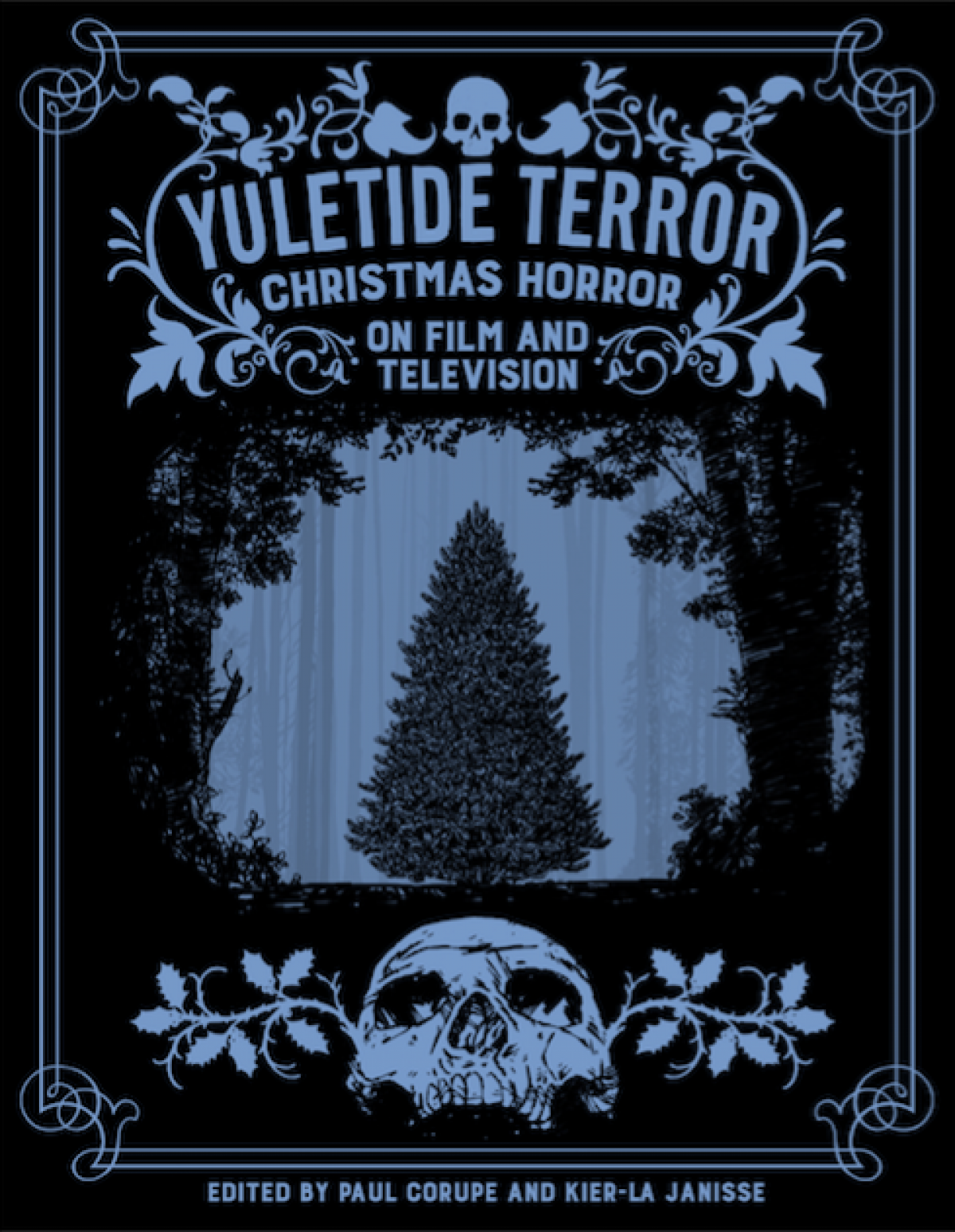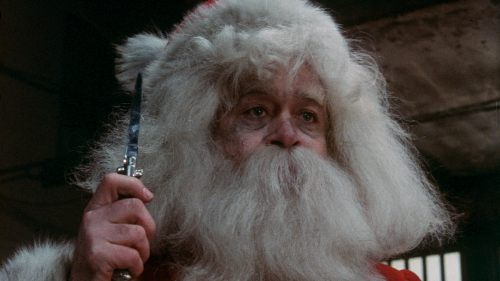Please Enjoy An Exclusive Excerpt From YULETIDE TERROR: CHRISTMAS HORROR ON FILM AND TELEVISION
We're big fans of the work being done by the folks at Canada's Spectacular Optical - we've covered a number of their book releases in the past - and today we're excited to share an excerpt from the company's latest anthology, Yuletide Terror: Christmas On Horror And Film.

The anthology, currently being financed via IndieGoGo campaign, "offers a definitive, in-depth exploration of the history of these subversive film and television presentations that allow viewers to engage in different ways with the complicated cultural history of the Christmas season." Essentially, it's a collection of essays about your favorite holiday-themed horror movies, capped off with 200 reviews. We'd recommend this one for the die-hard holiday-horror loving film geek in your life (our own Brian Collins, for instance).
Spectacular Optical was awesome enough to pass along the following excerpt, which comes from Stephen Thrower's "Ringing The Changes: Black Christmas", one of the essays which you can find in Yuletide Terror: Christmas Horror On Film And Television:
The first stone-cold classic of Yuletide horror, Black Christmas (1974) takes place at a college sorority house winding down for the Christmas holidays, subverting “the season to be jolly” and reconfiguring it as the perfect setting for murder. Although not well-reviewed during its initial theatrical release, it has since grown considerably in stature due to its unsettling atmosphere, sardonic humour and numerous genuine shocks. The film is now widely regarded as a classic of the horror genre, and a likely influence on John Carpenter’s pivotal Halloween (1978).
When Black Christmas went before the cameras in Toronto, in April 1974, there were no other Canadian horror films currently in production. David Cronenberg’s groundbreaking Shivers was still a year away, and previous flirtations with the genre, such as The Reincarnate (1971) and Cannibal Girls (1973), had already been and gone. Black Christmas’s director Bob Clark was the closest thing Canada had to a “horror auteur” but even that was a bit of a stretch. For a start he wasn’t Canadian, although he became a “landed immigrant” when he moved there in 1972. Furthermore, he viewed horror as a way of getting a foothold in the film industry rather than a life-long vocation. Nevertheless, Clark built up strong professional connections in Canada, and three of his previous credits – Children Shouldn’t Play with Dead Things and Deathdream, which he directed, and Deranged which he produced – were horror pictures. (Two primitive earlier projects, The Emperor's New Clothes, 1966, and She-Man: A Story of Fixation, 1967, so embarrassed Clark that until the internet made secrecy more difficult he usually omitted them from his filmography.)
Initial press response to Black Christmas was as frosty as the film itself. When U.S. trade paper Variety posted a review from their Canadian correspondent it was little more than a sneer, delivered from the assumed vantage point of “quality cinema”:
This kill-for-kicks feature exploits unnecessary violence in a university sorority house operated by an implausibly alcoholic ex-hoofer. If it was made to play less discriminating situations, Black Christmas will succeed, but if its aim is to run anywhere else the venture can be marked as a failure … Black Christmas does no one connected with it proud. It has tension, but that of an artificial nature.
Reviews such as this highlight the problems faced by Black Christmas in its homeland. Success in a commercial context (“less discriminating situations”) was not real success, while the very raison d’être of the horror genre – to horrify and/or strike fear in the audience – devalued it a priori in the eyes of the cultural establishment. (Frankly, if the restrained depictions of murder in Black Christmas constitute “unnecessary violence” one has to wonder how the genre was meant to survive at all). A few weeks later, The Ottawa Journal poured scorn on the cast (“Miss Kidder … dies far too late for my money”; “Miss Hussey stays alive, sort-of. You can’t really tell from her acting”; “The housemother Marian Waldman is a not-so-secret drunk and her performance is embarrassing”) before declaring, “The killings here are for cheap thrills and the variety of the deaths is the only thing to keep your mind from going into neutral for the duration.” Luckily, Canadian filmgoers ignored the bad reviews and flocked to see the film. Figures published by Variety at the end of 1976 showed that Black Christmas was the second highest-grossing domestic picture of the decade to that point (having made $1.6 million in two years), just behind the hit comedy drama The Apprenticeship of Duddy Kravitz (which made $1.8 million over roughly the same period). Evidently those “less discriminating” audiences were now a force to be reckoned with in Canadian cinema...
Read the full story in YULETIDE TERROR: CHRISTMAS HORROR ON FILM AND TELEVISION, crowdfunding now through pre-sales at www.igg.me/at/yuletideterror

Head over to this page to learn more about the project and to donate to the book's ongoing IndieGoGo campaign. And after you've done that, hit the comments below to let us know what your favorite holiday-themed horror film is!
Side note: how basic am I if I just choose Gremlins?



